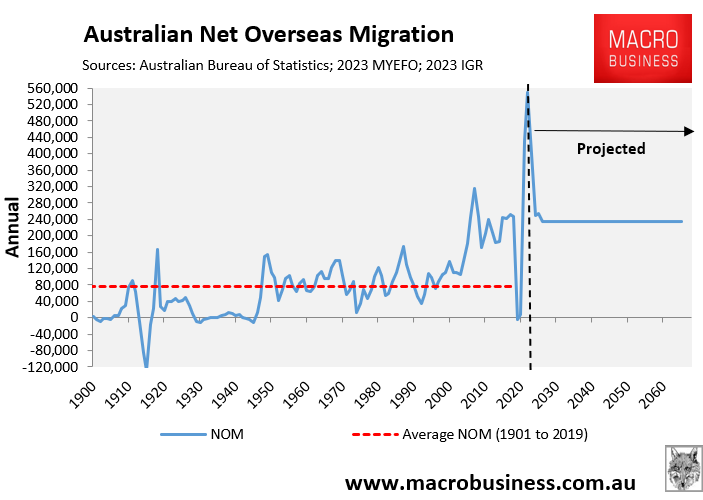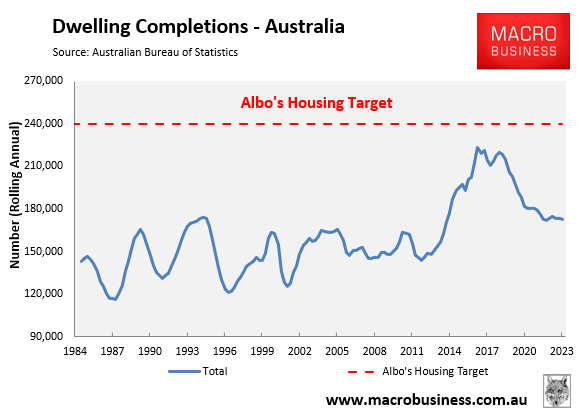Data from the Australian Bureau of Statistics shows that the nation’s migrant intake rose to a record 547,300 in 2023.

It would require an additional 218,920 dwellings to accommodate them, based on the average household size of 2.5 people.
However, just 163,836 new dwelling were constructed during 2023, which is the lowest level in 11 years. The number of homes added is even lower when accounting for demolitions of existing homes.

The federal goverment’s signature policy of building 1.2 million new homes over five years formally began on Monday.
The Housing Industry Association’s (HIA) chief economist Tim Reardon estimates that 120,000 homes would have to be built merely to accommodate natural population growth and the replacement of ageing housing stock without taking into account migration.
The HIA also estimates that Australia will run 64,000 behind target this financial year, and then fall short by 40,000 next financial year, 25,000 in the subsequent two years and 33,000 in the final year.
“We don’t have the industry getting to that 240,000 rate of build required within the next 10 years”, Reardon said.
In a similar vein, NAB chief executive Andrew Irvine last week claimed that “we need 10% more homes, more dwellings, to house the people we have, never mind the migrants coming to our shores”.
To meet the federal government’s housing target, an average of 240,000 homes need to be built each year, a level that has never been achieved before in a single 12-month period.

Moreover, the last peak in building construction between 2015 and 2019 occurred alongside significantly lower interest rates, lower material costs, and fewer labour shortages.
The last building boom also involved a massive degradation of quality, resulting in the construction of thousands of high-rise apartments with serious structural faults, which buyers and taxpayers are still paying for today.
Instead of degrading build quality and trying in vain to meet Albo’s fanciful 240,000 housing target, the optimal solution is to slash net overseas migration to sensible historical norms of below 120,000 a year.
Immigration at this level would ensure that demand remains consistent with supply. It would also lessen the need to turn our major cities into high-rise ghettos.

